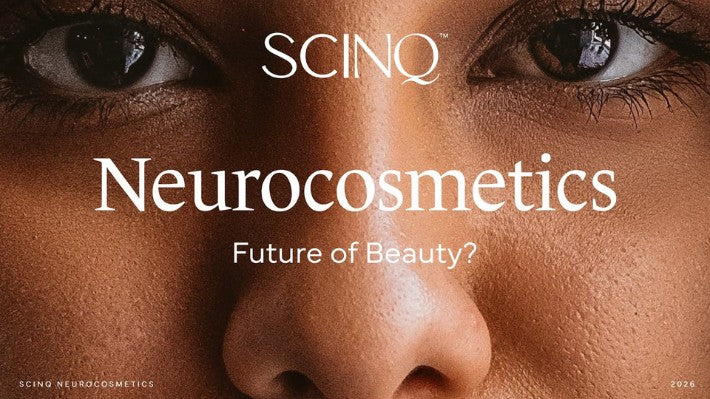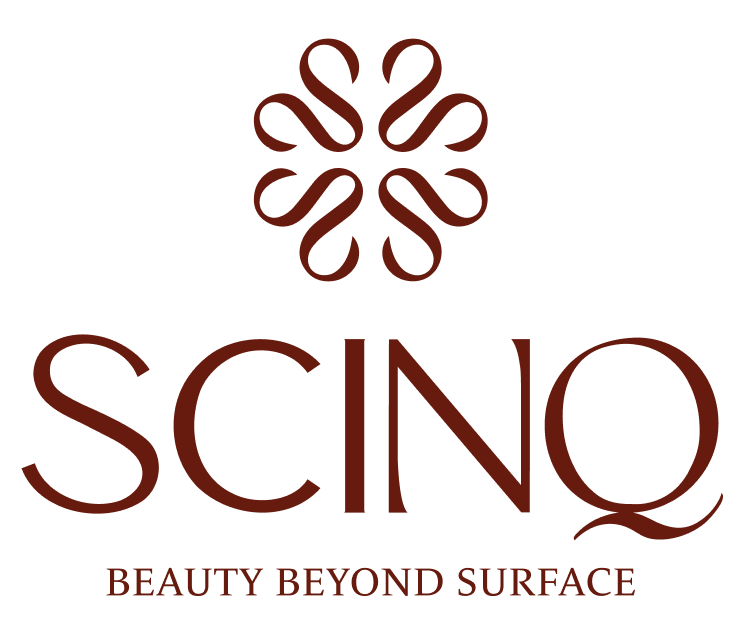Something extraordinary occurs at 8:40 PM. A slight tingling sensation begins, an early sign of the complex dialogue between the skin and the brain, the foundation of modern neurocosmetics. This signal isn’t just a fleeting feeling; it marks the moment when cutaneous receptors interact with neuromediators, creating a conversation that shapes how the skin behaves at night and prepares itself for morning repair.
What follows is a methodical biological process that turns this initial communication into measurable outcomes. Over more than fourteen evenings, a carefully structured protocol evaluates whether influencing these neural pathways with neurocosmetic ingredients can create real, visible change or simply the illusion of it. This is where the neurocosmetics benefits truly come to life: when sensory responses translate into tangible improvements on the skin.
Understanding the Skin–Brain Connection in Skincare
The skin and brain share a deep evolutionary relationship, originating from the same embryonic tissue. This common origin forms pathways through which cutaneous receptors influence endorphin, serotonin, and cortisol levels. These shifts in neuromediators show up as warmth, flushing, or that subtle evening tingle - sensations many formulas overlook or misunderstand.
To fully grasp what are neurocosmetics, it helps to observe these signals not as irritation but as meaningful neuro-cutaneous responses. The critical window appears within the first five minutes after applying a neurocosmetic formula. At this early stage, before traditional actives begin their work, the neural response is at its clearest. Tracking these moments as data points reveals patterns that guide more precise, targeted skincare interventions driven by both biology and neuro-science.
Discover the Benefits of Neurocosmetics

1. Moving Beyond Barrier Repair Alone
Although barrier integrity is crucial, focusing solely on this factor leaves some critical questions unanswered. Most complain of morning irritation and nighttime itch, even after applying thick barrier creams religiously. It is usually the signal that is missing and not the seal.
An eye-opening comparison is formed where one week of barrier-based care is compared to one week of neuroactive ingredients. Once the redness is reduced and the sleep disturbances are removed under neuroactive treatment with the rest of the variables held constant, the indications are straightforward: neural signaling requires its own specific treatment.
2. The Seven-Minute Evening Framework
The protocol revolves around a seven-minute time slot that starts at 10:30 PM. The setting requires silence and minimal distractions. An individual neuroactive formula is applied to the skin, and silence ensues as the first vital minutes pass.
A subject can use a visual anchor, which is neutral, such as a particular point on the wall or a soothing object, and provides continuity even between evenings. It is in this organized quiet, one thing stands out, whether the 8:40 PM tingle is eased, fades away, or lingers after application. This quiet window often reveals the subtle skin-brain connection in skincare, especially when sensations repeat night after night.
Keeping a record of this path without giving in to the urge to use other products ensures data integrity. Every night is a reflection of the previous one, which sets the conditions in which actual change stands out against the background.
3. Strategic Formula Selection
Beta-glucans excel at promoting visible calm in reactive skin, supporting the appearance of composure even as neural activity returns to normal. Peptides strengthen barrier function while the signaling intervention proceeds, allowing structure and sensation to evolve together.
When fragrance proves unsuitable, tactile and thermal elements provide grounding inputs. A cool ceramic tool, a chilled applicator, or a refined gel texture serves as a physical anchor, guiding the nervous system toward equilibrium. These repeatable sensory cues create conditions where outcomes become attributable to specific interventions rather than chance. This is one of the clearest reflections of neurocosmetics benefits in a controlled environment.
4. Quantifying the Intangible
Fourteen days of continuous measurement will provide defensible data for the subjective experience. A five-point scale score of calmness is given to each evening, recorded at the same time point within the protocol window. The morning observations are recorded using a simple present/absent or modest 0-3 scale, as the redness is noted without attempting false accuracy, and this provides a meaningful comparison.
Sleep disturbances, especially those 3 am itch attacks, are tallied with ease. Their absence or presence can tell more than the detailed descriptions. The visual confirmation of the logged observations is achieved by using photographs taken on Days 1 and 14 under the same lighting conditions.
The time of sensations is also essential. In cases where tingling consistently occurs at 8:40 PM, its activity in the post-application window of neurocosmetic ingredients, whether it subsides within two minutes or not, becomes a crucial data point of interest. These measurable neural responses help clarify what are neurocosmetics in a practical, observable context.
5. The Power of Control Nights

Control nights establish the baseline that gives the experiment meaning. These evenings feature moisturizer application without additional steps. Lights dim within five minutes.
This deliberate simplicity separates the particular contribution of the neuroactive intervention. On control nights, cooler skin and faster sleep onset should be recorded. When any improvement is recorded during the neuroactive week compared to this basic baseline, its relevance cannot be overstated.
Should control nights unexpectedly outperform intervention nights, the data clearly reveals this truth, which is, after all, the purpose of controls.
6. Maintaining Experimental Rigor
Uniformity brings out credibility. Every evening, it starts at 10:30 PM. Short logging helps to comply, but not to be cumbersome. Stability of the environment provides the nervous system with consistent cues on a night-to-night basis.
Tingling episodes and flushing incidents are recorded weekly to facilitate nightly observations and identify patterns. In the case of fragrance being an issue, tactile and thermal components uphold protocol integrity without compromise.
Clear patterns are generally seen in two weeks. The second two-week cycle can validate preliminary results where necessary. In case Day-14 measurements indicate no change, the protocol would require adjustments to certain variables, timing, ingredients, or sensory inputs, but not to abandon the assessment technique altogether.
To strengthen the evaluation, this stage also helps determine whether the routine is genuinely delivering neurocosmetics benefits or merely producing temporary sensory responses.
7. Interpreting Outcomes
Conservative pragmatism is needed in interpreting data. The frequency of redness, the range of calmness scores, the number of sleep disturbances, and similarity in the resolution of evening tingling are all indicative of a significant neuroactive contribution, which can be reduced.
Combined results show more peaceful evenings, but no change in mornings; make specific corrections. You may also adjust the concentration of peptides to provide enhanced support for the barrier without compromising sensory modulation. The timing of the application could be adjusted earlier to capture the signals before they peak. The choice of texture can vary to enhance compliance and contact time.
Understanding what are neurocosmetics in the context of this process becomes critical here: these formulations do not simply work on the skin’s surface but modulate the communication pathways between skin cells and the nervous system.
The design of the protocol sheds light on the interventions that yield results and those that do not, thereby removing the guesswork in refining the process.
8. The Discipline of Observation
Neurocosmetic practice achieves its most significant impact when users treat neural signals as deliberately as they treat barrier function. Dedicating one to two minutes within a seven-minute routine to neural modulation adds precision, not complexity.
The approach remains intentionally minimalist: a consistent schedule, a single neuroactive step, a quiet space, a brief log. These small, disciplined decisions create conditions where the skin-brain dialogue becomes audible and frequently manageable.
Over the course of more than fourteen nights, the points and counts accumulate to form a story that is supported by the facts. As that story relates to more regular mornings and preferred evenings, the process justifies itself.
The evening protocol converts the unintelligible sensations into quantifiable phenomena. It makes the subjective visible and the invisible subject. Above all, it places the authority of observation and adaptation in the hands of those who receive these signals night after night, making passive receptors of sensation the active constructors of the neural topography of the skin.








Leave a comment
This site is protected by hCaptcha and the hCaptcha Privacy Policy and Terms of Service apply.